A list of historic sites for those willing to dig into its past. An invitation to explore every single spot Carmen hides.
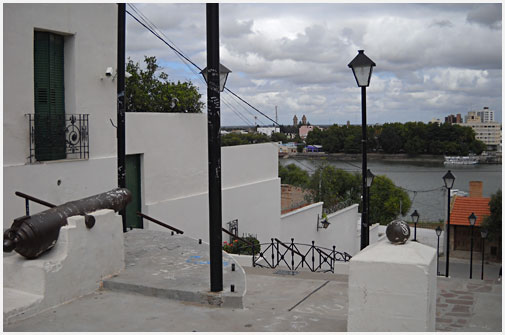
To start with, Mihanovich Dock is one of the not-to-miss spots in
the city. It was built in 1907 by the Mihanovich Company for the purpose of joining this city and the huge
Buenos Aires.
La Carlota, built in about 1820, is another famous site that visitors cannot miss if they want to understand the history of the city. It is one of the typical rural houses with colonial design located in the historic quarter of the city and declared a National Historic Monument.
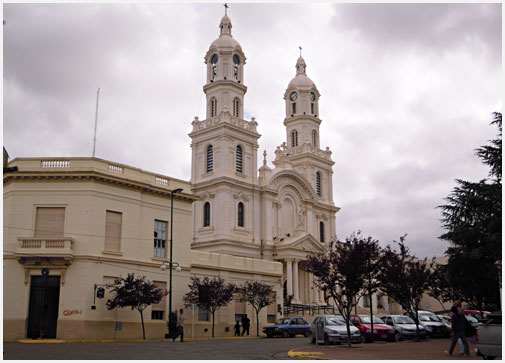
The Municipality was created in 1854 and it is one of the oldest in the country. However, the construction of the Town Hall began in 1882 and went through several changes leading to the current building, which is now the seat of the Municipal Executive Branch of government and the Honorable Town Council of the city.
The Fortress Tower dates back to 1780 and served as the seat of the first chapel of the fortress (afterwards the Chapel of Our Lady of Carmen). In 1942, it was also declared a Historic Monument.
The fortress, once demolished as it is evidenced by a few vestiges tourists can see today, is a clear testimony of the main role played by the town Carmen de Patagones during the Conquest of the Desert and the strengthening of the Spanish and, later on, the
Criollo sovereignty in these hostile lands in those times.
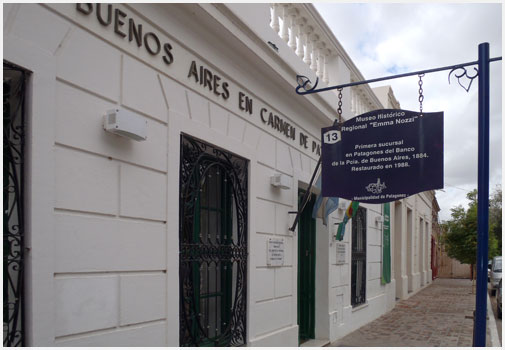
If there is one street that tourists cannot miss to visit is the narrow street named San José de Mayo (bearing this name in honor to the Uruguayan city). Strolling along this passage, where tourists can appreciate the cannons, is a must tour.
Not far away, visitors can also find the rural house known as
Rancho Rial, built in 1820. Today this is a perfect venue for art exhibitions, cultural activities and the expositions carried out every year.
Some steps ahead are the Maragatas Caves, which reveal how tough and hard the settlement of the first Spaniards arriving in these lands was in 1779. Even though Spaniards settled down in the houses granted by the Spanish crown, they had to cooperate with their construction and, in the meantime, use the caves as their residence.
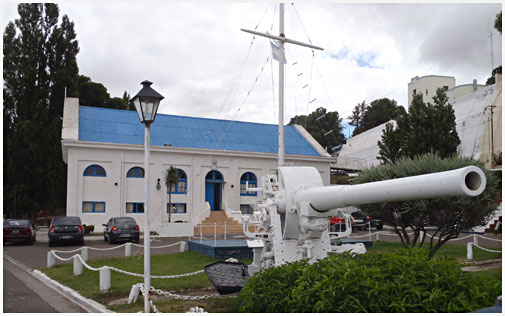
One of the typical and mandatory tours is the visit to the Emma Nozzi Regional Historic Museum, formally known as the Museum of Carmen de Patagones. Since 1988, the museum has been operating in the historic house of the Bank of the Province of Buenos Aires, whose construction began in 1830. The museum houses objects, mainly photographs, documents and letters of those days, which allow tourists to know in detail the history of the city and of Patagonia as well.
Plenty of qualified guides are in charge of telling all they know without any cost and inviting tourists to visit every secret hidden in this awesome city, the southernmost in the
Province of Buenos Aires and one of the gates into Argentinian Patagonia.
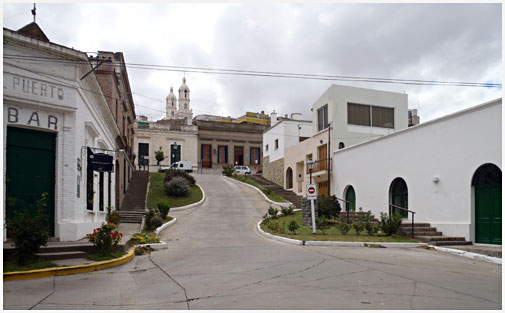
7 de marzo Square was the first public square created in the city and it was named after the date of the confrontation against the Brazilian invasion of these lands in 1827.
Among other attractions, visitors can find the building of the Coast Guard and its Naval Museum, the National Dock,
7 de marzo Beach Resort, Piedra Buena Park and the famous bar in the port, a classic visit for residents and tourists which gives testimony of fishermen’s lifestyle in this city. Today it is also a historic monument.
Carmen de Patagones, a place where history invites visitors to get to know an incredible city.










Pablo Etchevers